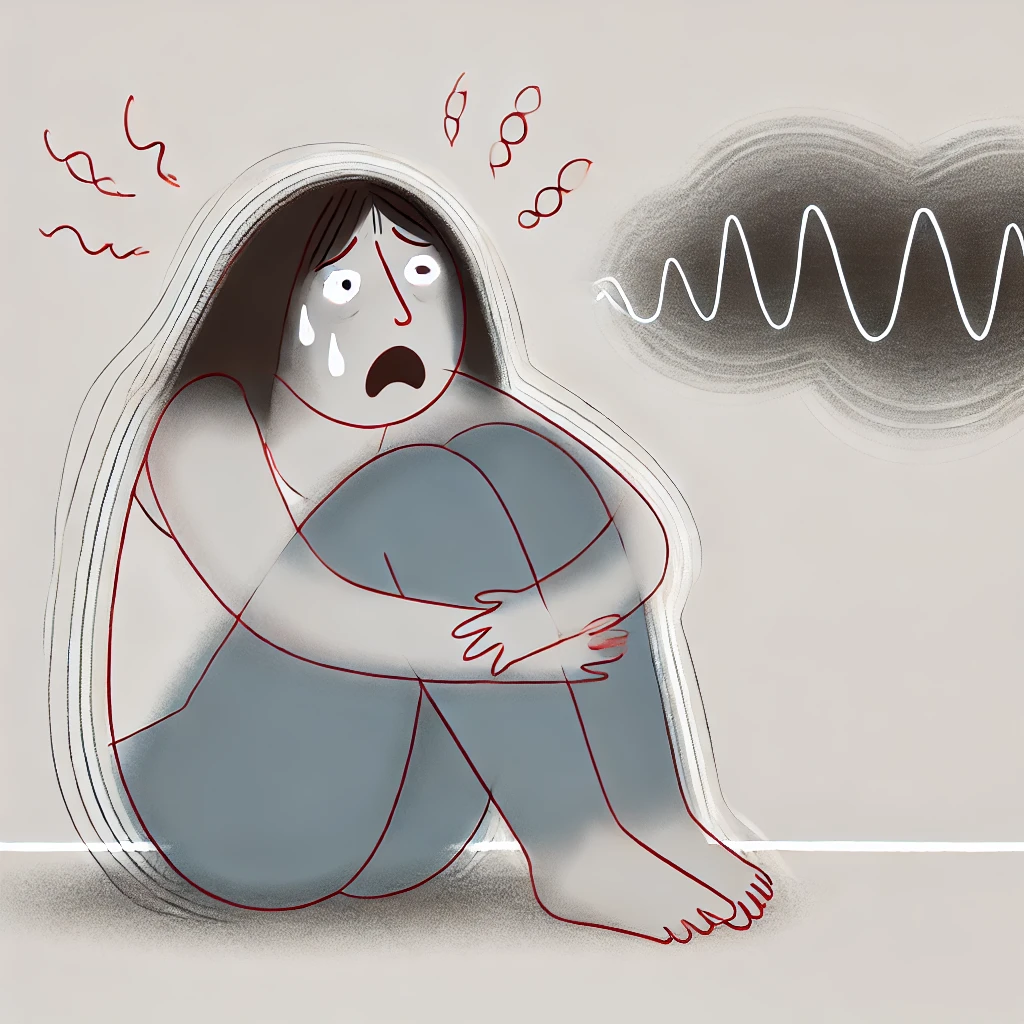Managing ADHD and Panic Attacks: A Guide for Women
ADHD and panic often occur together. When you start to have panic attacks, it can be overwhelming and scary. By understanding panic attacks and what they mean, as well as just a few strategies, you can help yourself feel better.
What is a Panic Attack?
A panic attack is a surge of overwhelming fear and discomfort. It peaks within a few minutes and will end if you don't resist it. During an attack, your body reacts as though it’s in real danger—even though there is no threat. This "fight-or-flight" response is a trick your brain plays on your body, making you feel like something catastrophic is happening when it's not.
It’s important to remember that panic attacks feel dangerous, but they are not physically harmful. While the symptoms are intense and distressing, they do not cause lasting harm and will pass on their own.
Common symptoms include:
- A racing or pounding heart
- Shortness of breath or feeling like you can’t breathe
- Dizziness or lightheadedness
- Chest pain or discomfort
- Sweating, shaking, or chills
- An overwhelming fear of losing control, losing your mind, or dying
This is your brain misinterpreting bodily signals, tricking you into believing you're in danger. Panic attacks often come on suddenly, but despite how severe they feel, they are not life-threatening.
How ADHD and Panic Attacks Overlap
For women with ADHD, panic attacks can be more frequent or feel even more overwhelming due to several factors:
- Heightened Sensitivity to Stress: ADHD often comes with heightened emotional reactivity. Small stressors can feel giant, and this heightened state makes you more prone to panic attacks.
- Emotional Dysregulation: With ADHD, emotions can swing rapidly from one extreme to another. In moments of high stress or frustration, this dysregulation can trigger panic.
- Difficulty Sensing Bodily Signals: Many people with ADHD struggle with interoception (the ability to sense and understand internal body signals) and alexithymia ( identifying feelings). This makes it harder to notice the early signs of anxiety or tension, allowing panic to sneak up before you realize it.
Understanding how ADHD and panic attacks overlap can help you take steps to manage them early on rather than being caught off guard.
Common Triggers for Panic Attacks in ADHD
Recognizing your panic attack triggers is essential. Common triggers in those with ADHD include:
- Sensory Overload: Too much stimulation—like bright lights, loud noises, or busy environments—can lead to feelings of overwhelm and panic.
- Task Paralysis: Feeling stuck or unable to begin or complete a task can result in intense frustration, which can sometimes spiral into panic.
- Overthinking: Racing thoughts, a common ADHD symptom, can fuel anxiety, eventually leading to panic.
- Medication Wear-Off: As ADHD medication wears off, anxiety may increase, which can contribute to a panic attack.
- Fatigue or Sleep Deprivation: A lack of sleep makes it harder to manage stress, increasing the likelihood of panic attacks.
What Does a Panic Attack Feel Like?
Panic attacks are often described as feeling like you're losing control or something terrible is about to happen. Here’s how they typically manifest:
- Physical Symptoms: Your body goes into overdrive—your heart races, your breathing becomes shallow, and you might feel dizzy or lightheaded. Many people feel chest pain, which is often mistaken for a heart attack. Remember: It feels real, but it's not dangerous.
- Emotional Symptoms: Panic attacks often come with a sudden fear of losing control or feeling like you’re going to die. These thoughts are frightening, resulting from your brain misinterpreting the situation.
The key to managing adhd and panic attacks is understanding that these feelings and sensations are not harmful, no matter how scary they seem. Your mind and body are overreacting, but the episode will pass.
Practical Strategies for adhd and Managing Panic Attacks
When panic strikes, it can feel overwhelming, but there are effective strategies you can use to manage the symptoms. Here are some ADHD-friendly tools:
1. Remind Yourself: Panic Is Not Dangerous
The first step is reminding yourself that your sensations are not dangerous. Your body is in "false alarm" mode. Externalizing language is a powerful thing for people with adhd. It might be helpful if you can say this out loud or write it down, using phrases like "This will pass, and I’m safe." Panic attacks peak within 10-20 minutes and eventually subside.
2. Try the Diver’s Reflex Technique
Splash cold water on your face or place a cold cloth on your forehead. This activates the vagus nerve, which calms your nervous system and helps reduce your heart rate.
3. Practice Deep Breathing
Slow, deep breathing counteracts hyperventilation and helps bring your focus back to the present. Use the 4-4-4 method: inhale for four counts, hold for 4, and exhale for 4. Longer exhales (which stimulate the parasympathetic nervous system) can help calm your body faster.
4. Ground Yourself with the 5-4-3-2-1 Method
This technique pulls your focus away from panic and back to the present moment:
- 5 things you see
- 4 things you can touch
- 3 things you hear
- 2 things you can smell
- 1 thing you can taste
This sensory check-in can distract your brain from the panic and reduce the intensity of the attack.
5. Challenge Negative Thoughts
When panic hits, your mind may start racing with catastrophic thoughts. Challenge these thoughts by reminding yourself that panic attacks are temporary and not life-threatening. Cognitive Behavioral Therapy (CBT) techniques can be beneficial in reframing these automatic, fearful thoughts.
The AWARE Approach to Managing Panic Attacks
The AWARE method helps guide you through the steps of experiencing a panic attack while reducing its power over you:
- Acknowledge and Accept: Acknowledge the panic attack and accept that it is happening. Fighting it may only make it worse.
- Wait and Watch: Watch your symptoms without reacting to them. Instead of focusing on fear, observe what your body is doing.
- Actions for Comfort: Take steps to comfort yourself—deep breathing, grounding, or splashing cold water on your face.
- Repeat: Go through these steps until the panic subsides.
- By acknowledging that panic attacks are not dangerous, you take away their power to frighten you as much.
Creating a Crisis Plan for Panic Attacks
A crisis plan can help you feel more in control when panic strikes. Your plan might include:
- Contacting a Support Person: Reach out to someone you trust.
- Using Calming Techniques: Have a list of grounding exercises or breathing techniques ready.
- Affirming Your Safety: Keep affirmations like "I am safe" and "This feeling will pass" on hand to remind yourself during the attack.
Having a plan gives you a sense of control and reduces the fear of panic attacks.
Conclusion
Having adhd and panic attacks can feel intense and frightening, but they are not dangerous. Your brain is simply misinterpreting signals, and the panic will pass. By combining ADHD-friendly strategies with self-compassion, you can manage both ADHD and panic attacks more effectively. Remember: You are in control, and these feelings will not last forever. With the right tools, you can regain confidence and feel empowered in your mental health journey.
Leave adhd and panic for other pages



